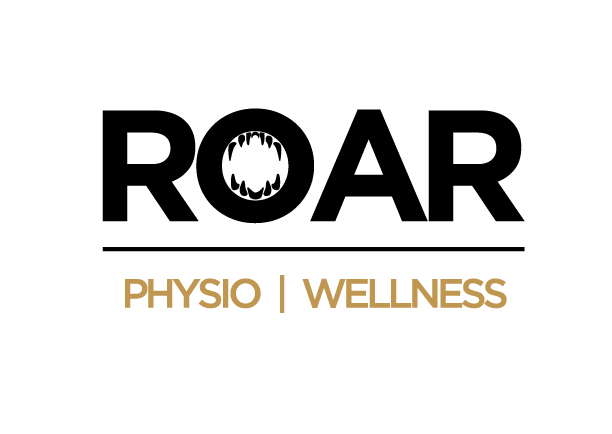Physiotherapy is widely used to support recovery, enhance function, and manage pain—but despite its proven benefits, many myths continue to circulate. These misconceptions can prevent people from seeking care or lead them to misunderstand what physiotherapy can actually do. In this blog, we’ll take a closer look at the most common myths about physiotherapy and clarify what’s true and what’s not. Whether you’re recovering from injury, managing chronic pain, or simply curious about how physiotherapy works, this guide will help you better understand its role in health and movement.
Myth or Fact: Physiotherapy Is Only Used for Injuries
Many people assume that physiotherapy is only useful after an injury, but that’s far from the truth. In reality, physiotherapy supports a wide range of health and fitness goals beyond post-injury recovery.
- Preventing Injuries Before They Happen: Physiotherapists assess movement patterns and identify areas of weakness or imbalance, helping individuals avoid injuries altogether.
- Improving Posture and Ergonomics: Physiotherapy helps correct poor posture and teaches body mechanics that reduce strain during work, driving, or daily tasks.
- Managing Chronic Conditions: From arthritis to fibromyalgia, physiotherapy offers strategies to manage pain, improve mobility, and support daily function.
- Enhancing Physical Performance: Athletes and active individuals work with physiotherapists to improve flexibility, strength, and coordination for better results.
- Supporting Aging Adults: Physiotherapy can help seniors maintain independence, prevent falls, and manage age-related movement changes.
- Rehabilitating After Surgery or Illness: While post-surgical rehab is common, physiotherapy also supports recovery from strokes, neurological disorders, and respiratory conditions.
The scope of physiotherapy is far broader than injury management—it’s about helping people move and feel better at every stage of life.
Myth or Fact: You Need a Doctor’s Referral for Physiotherapy
In most cases, you do not need a doctor’s referral to see a physiotherapist. Physiotherapists are considered primary healthcare providers in many regions, which means you can book an appointment directly without needing to go through a physician first. This allows faster access to care, especially if you’re dealing with pain, stiffness, or limited mobility that doesn’t require emergency medical attention.
That said, some extended health insurance plans or workplace injury claims may require a referral in order to approve reimbursement. If you’re using insurance, it’s always a good idea to check with your provider to see what documentation is needed. Otherwise, you’re free to seek physiotherapy on your own terms—whether you’re managing a chronic condition, recovering from a sprain, or looking to improve your physical function.
Myth or Fact: Physiotherapy Can Be Replaced by Exercise Alone
While exercise is a vital part of physiotherapy, it’s only one piece of a much larger approach. Replacing physiotherapy with generic exercise routines overlooks the complexity of treatment and individualization that physiotherapists provide.
- Targeted Programming: Physiotherapists prescribe exercises tailored to your specific injury, condition, or movement pattern—not general workouts.
- Manual Therapy Integration: Hands-on treatments like joint mobilizations and soft tissue release are often essential to restoring function and cannot be achieved through exercise alone.
- Movement Assessments: Physiotherapists evaluate how you move to identify compensation patterns or biomechanical issues that could worsen over time.
- Progression and Monitoring: Exercise plans are adjusted regularly based on your progress, symptoms, and feedback—ensuring safe and effective recovery.
- Education and Prevention: Therapists teach you how to move more efficiently and avoid future issues, making the process far more comprehensive than exercise alone.
Physiotherapy is a personalized, clinically informed process. While exercise is a component, it’s not a substitute for the expertise and full treatment approach that physiotherapy offers.
Myth or Fact: Physiotherapy Is Painful
Physiotherapy is rarely painful, and when discomfort occurs, it’s usually temporary and part of the body’s healing process. The idea that physiotherapy equals pain is a common myth—often based on misunderstandings about how rehabilitation works.
Therapists aim to work within your comfort zone while gently encouraging progress. During certain treatments, especially when restoring movement to stiff joints or tight muscles, some discomfort may occur—but it should never feel harmful. Communication is key: if something feels too intense, the physiotherapist will adjust the treatment to ensure it remains safe and tolerable.
In fact, one of the primary goals of physiotherapy is to reduce pain—not cause it. With consistent treatment, most people experience less pain over time, along with greater mobility and confidence in movement.
Myth or Fact: Physiotherapy Is Only for Athletes
Physiotherapy is often associated with sports rehab, but its benefits extend far beyond the athletic world. It serves a broad population with diverse goals and needs.
- Office Workers: People with desk jobs often seek physiotherapy for back, neck, or shoulder pain caused by poor posture or prolonged sitting.
- Seniors: Older adults benefit from physiotherapy to maintain mobility, improve balance, and prevent falls.
- Children and Teens: Physiotherapy supports pediatric conditions such as scoliosis, coordination issues, or recovery from fractures.
- Pregnant and Postpartum Individuals: Specialized physiotherapy helps manage pelvic pain, core weakness, and mobility challenges during and after pregnancy.
- Individuals with Chronic Illnesses: Conditions like Parkinson’s, multiple sclerosis, or chronic fatigue syndrome often require physiotherapy to preserve functional independence.
- Everyday Movers: Anyone looking to move better, feel stronger, or recover from everyday aches can benefit from physiotherapy.
You don’t need to be an athlete to benefit from physiotherapy. It’s about helping every individual live and move more comfortably—regardless of fitness level.
Myth or Fact: Physiotherapy Is Ineffective for Chronic Pain
Chronic pain can be complex and persistent, but that doesn’t mean physiotherapy isn’t effective—it just means the approach must be different. In fact, physiotherapy is a leading treatment for managing long-term pain conditions.
- Pain Education: Understanding how pain works in the nervous system helps reduce fear and change how pain is experienced.
- Graded Movement Exposure: Individuals gradually reintroduce movement to desensitize the nervous system and rebuild confidence in physical activity.
- Breathing and Relaxation Techniques: These help regulate the stress response, which often amplifies chronic pain.
- Strength and Mobility Training: Carefully selected exercises improve endurance and function without aggravating symptoms.
- Self-Management Strategies: Physiotherapists teach pacing, activity modification, and recovery strategies that put control back in the individual’s hands.
Chronic pain doesn’t mean treatment is hopeless. With the right physiotherapy approach, people can experience less pain, improved function, and a better quality of life.
Get Your Roar Back
Myth or Fact: Physiotherapy Can Provide Instant Results
While some people experience relief within a session or two, physiotherapy is typically a progressive process. Instant results are rare—and expecting them can lead to frustration or premature discontinuation of care.
- Condition Severity Matters: Acute issues may respond quickly, while chronic or complex conditions require time to address root causes.
- Tissue Healing Takes Time: Ligaments, tendons, and muscles need weeks (sometimes months) to fully repair, even with proper treatment.
- Adaptation Is Gradual: Restoring movement, strength, and balance involves nervous system retraining and tissue adaptation—not quick fixes.
- Progress Isn’t Always Linear: Some days are better than others, and fluctuations are normal. Consistency is more important than speed.
- Sustainable Results Require Patience: Long-term improvements are more valuable than temporary relief and help prevent recurrence.
Physiotherapy is about creating lasting change, not overnight results. With consistent effort and guidance, steady improvement is achievable.
Myth or Fact: Physiotherapy Is Only Needed After Surgery
While post-surgical rehabilitation is a common reason people seek physiotherapy, it’s far from the only one. In fact, physiotherapy can help people avoid surgery altogether by addressing the underlying causes of pain or dysfunction early.
Physiotherapy is often recommended for prehabilitation—the process of preparing the body before surgery to improve outcomes afterward. It’s also widely used for managing non-surgical conditions like back pain, tendonitis, and joint stiffness. Additionally, many people benefit from physiotherapy simply to improve posture, movement, or performance without any injury or surgical history.
You don’t need to wait for surgery to benefit from physiotherapy. It’s a proactive tool that supports lifelong mobility, strength, and function.
Myth or Fact: You Can Do Physiotherapy at Home Without Supervision
While some physiotherapy exercises can be performed at home, the idea that it’s fully DIY is misleading and potentially risky. Supervision ensures exercises are done correctly, safely, and in a way that matches your current condition.
- Assessment Is Crucial: Physiotherapists determine which movements are safe and beneficial based on your physical assessment.
- Proper Technique Matters: Without guidance, it’s easy to perform exercises incorrectly, potentially delaying recovery or causing further injury.
- Progression Requires Expertise: Physiotherapists adjust difficulty, intensity, and duration based on how your body responds.
- Feedback Prevents Mistakes: Regular check-ins allow therapists to refine your plan and address issues before they escalate.
- Home Programs Are Supplemental: While at-home work is part of treatment, it’s most effective when paired with in-clinic assessments and updates.
Physiotherapy isn’t just a list of exercises—it’s a relationship and process that evolves with your body’s needs.
Myth or Fact: Physiotherapists Just Give You Exercises to Do
Physiotherapy goes far beyond handing out a list of exercises. While exercise prescription is important, it’s just one of many tools physiotherapists use.
- Comprehensive Movement Assessment: Every treatment starts with a thorough analysis of posture, gait, joint mobility, and muscle strength.
- Manual Therapy Techniques: Hands-on approaches like joint mobilization, soft tissue release, and trigger point therapy complement exercise programs.
- Education and Strategy: Physiotherapists teach you how to prevent re-injury, modify activity, and make better movement choices in daily life.
- Pain Management Techniques: These may include dry needling, electrical stimulation, taping, or ultrasound, depending on your condition.
- Individualized Care Planning: No two treatment plans are the same—your goals, limitations, and lifestyle guide the process.
Physiotherapists are well-versed in movement and provide holistic, customized care—not just exercises.
Find the Results You’ve Been Looking For
If you’re navigating pain, recovery, or performance goals, understanding what physiotherapy truly offers is the first step toward effective care. At Roar Physio | Wellness, we help you move smarter, feel stronger, and get back to doing what you love—with no myths, just science-based solutions. Contact us today to learn how physiotherapy can work for you.

